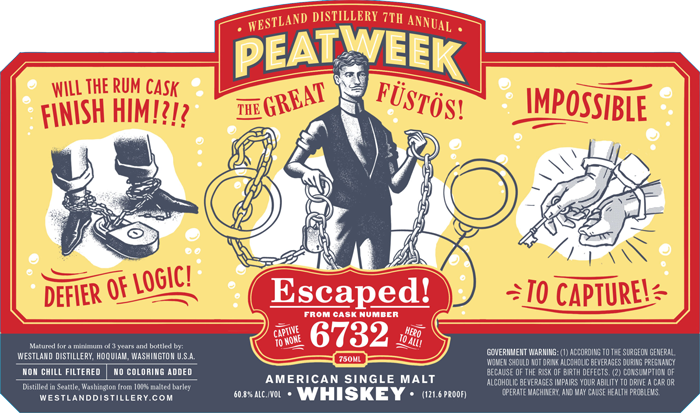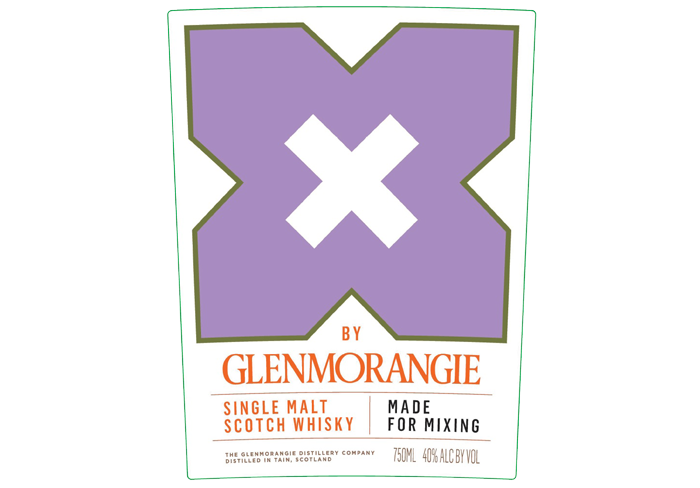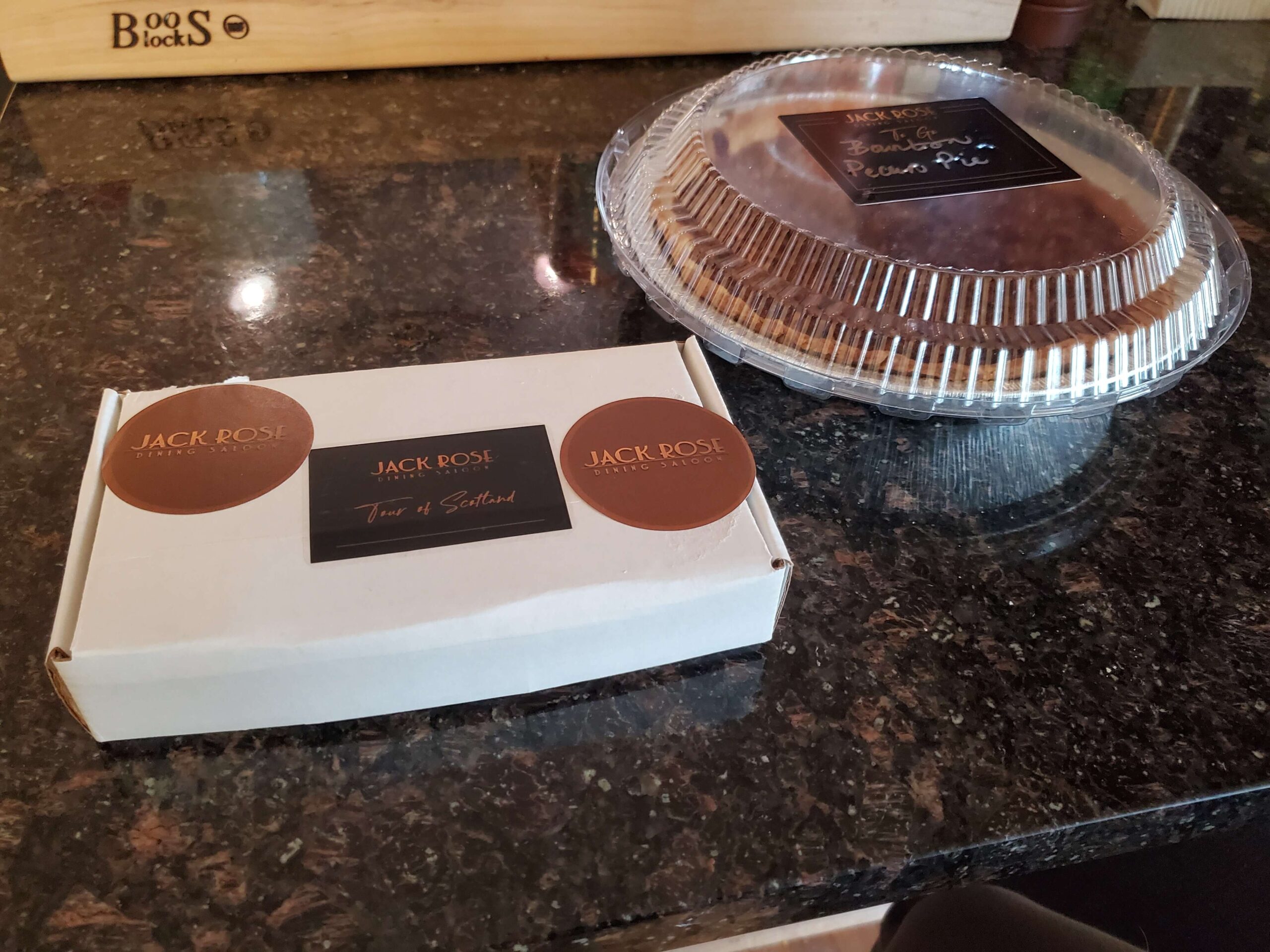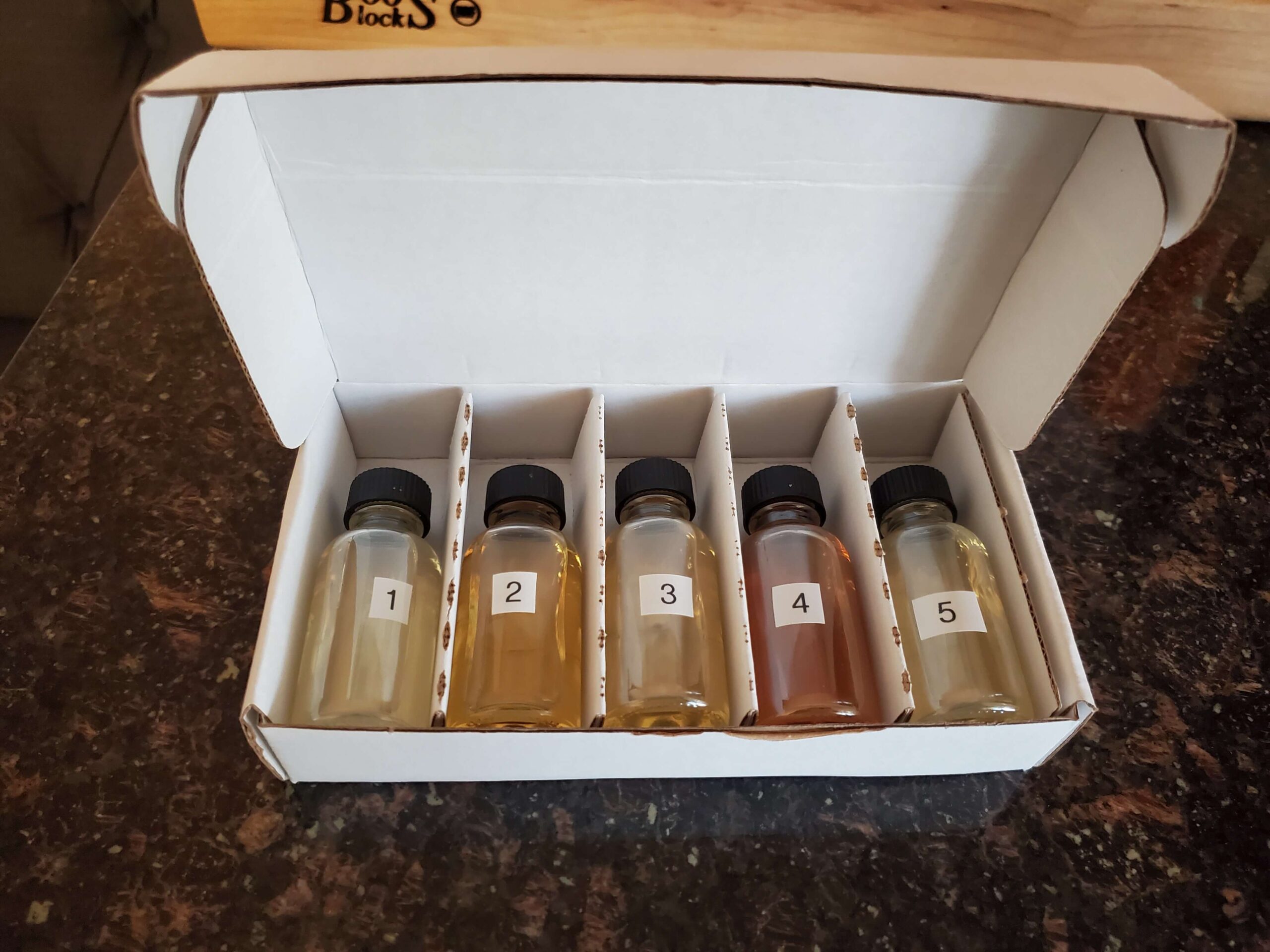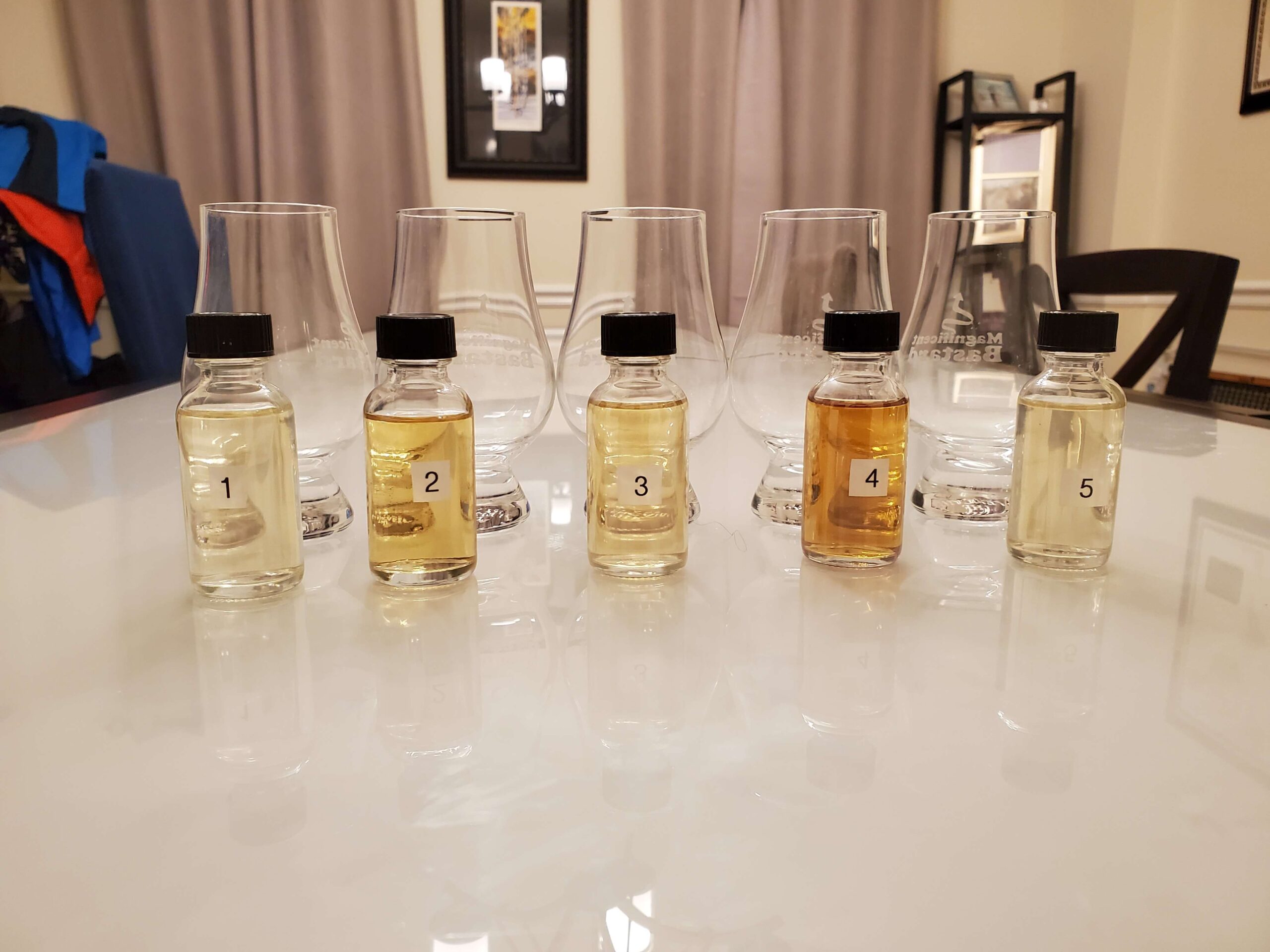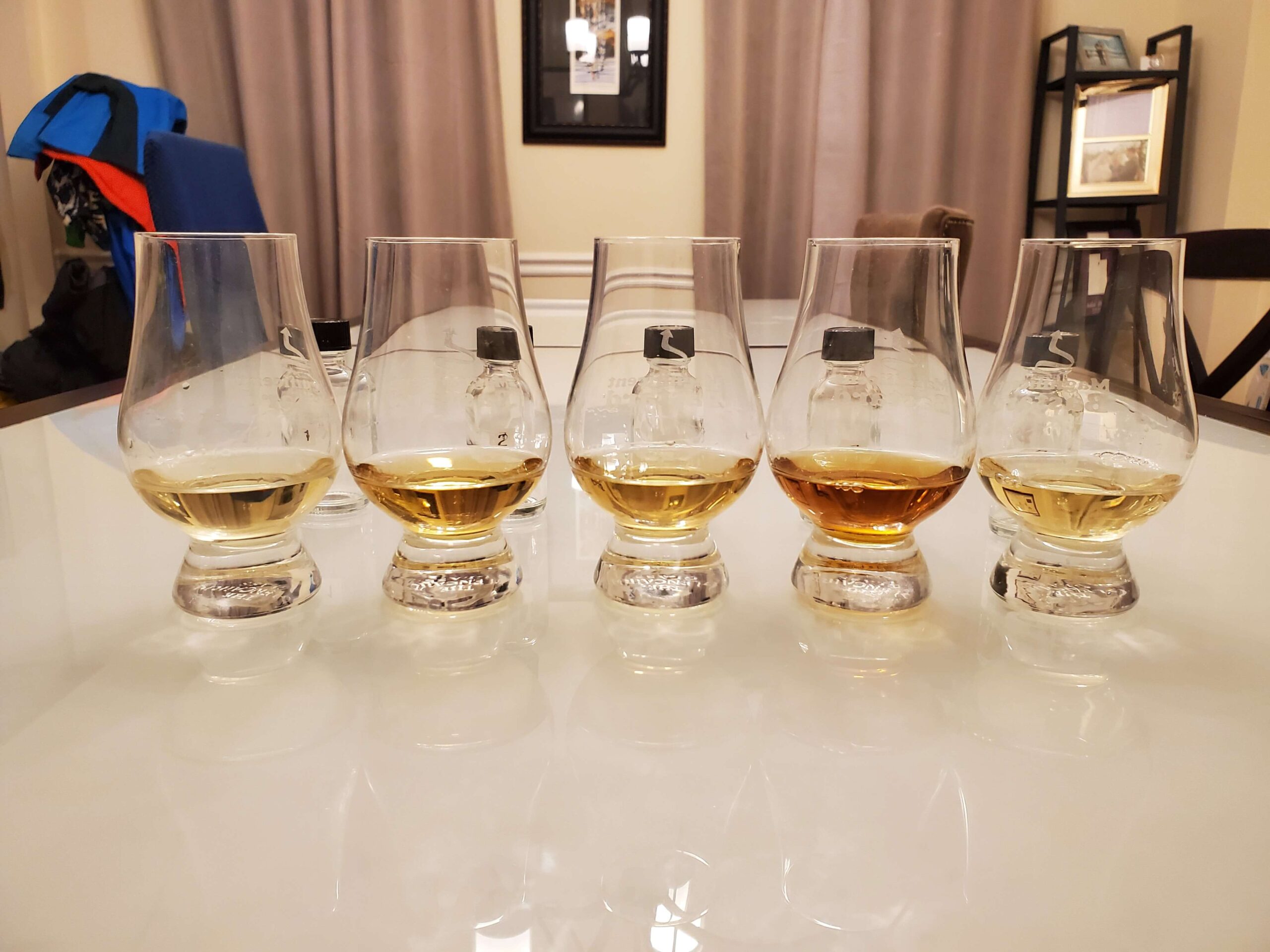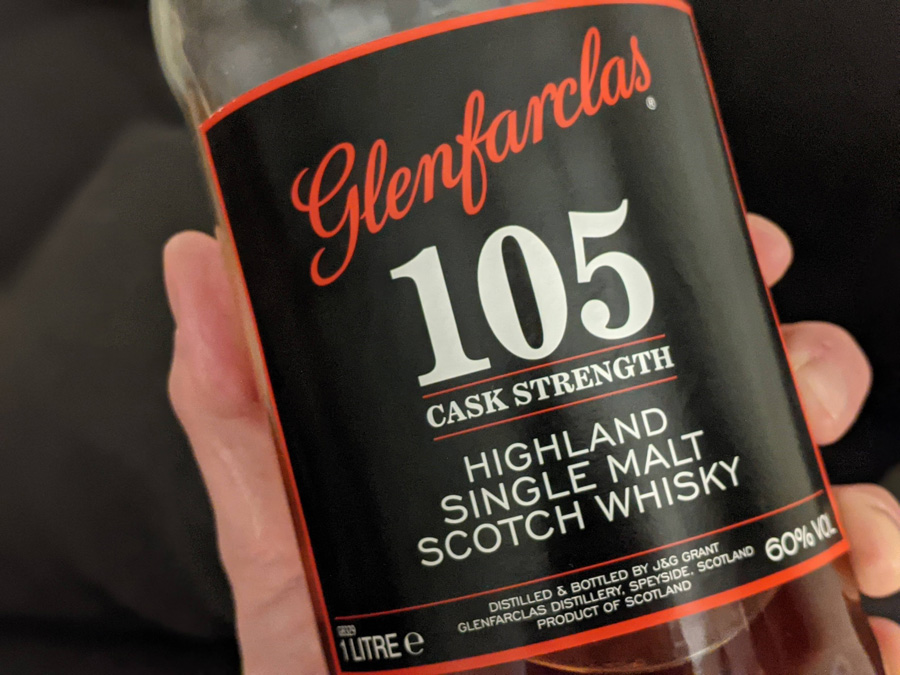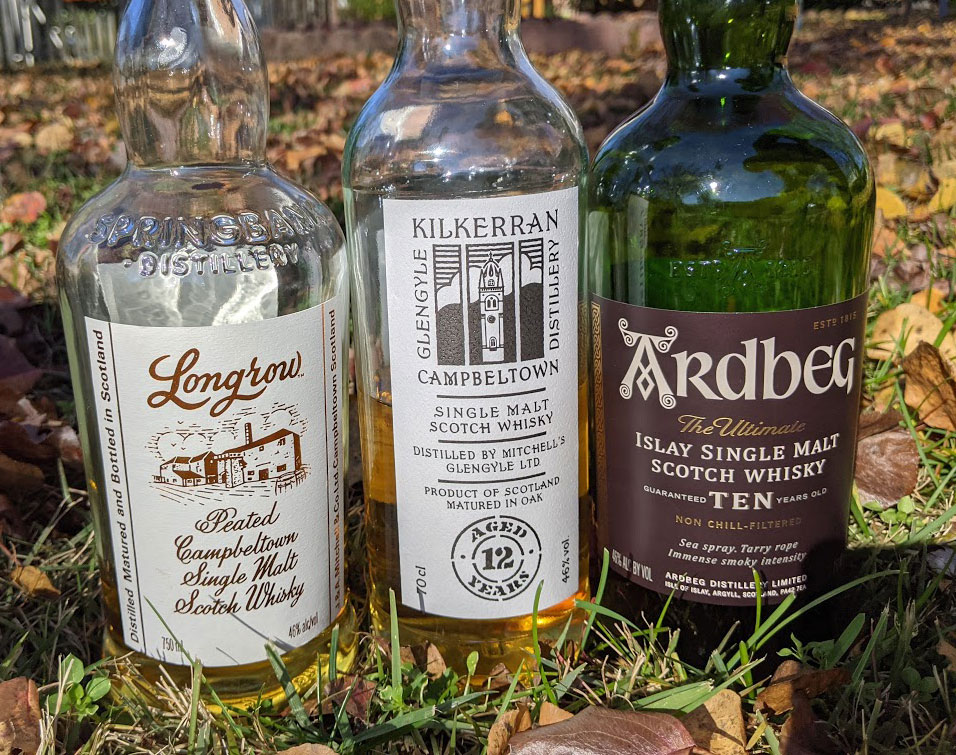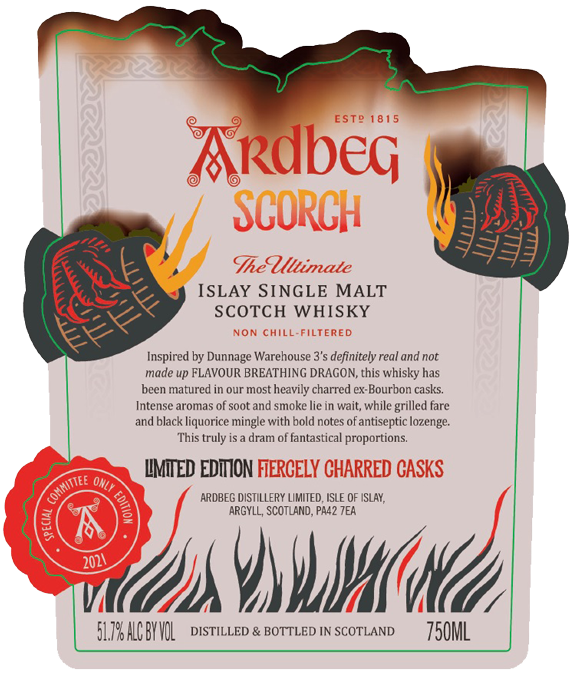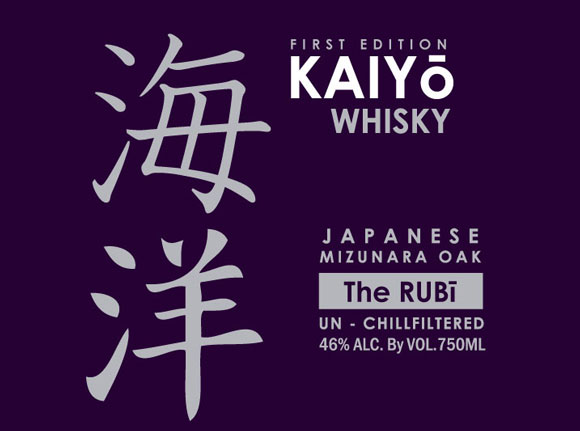How does an American malt whiskey stylized after a Highland Scotch single malt measure up to the real thing? This has been a curiosity of mine for a bit, and I figured the best way to start to answer would be a blind tasting.
For the lineup, the American malt in question was Virginia Distillery’s Courage & Conviction. Distilled from a mash of 100% malted barley, the flagship offering of the distillery nestled in the Blue Ridge Highlands is aged for a minimum of 3 years in a combination of Bourbon, Sherry (Fino, Oloroso and PX), and STR Cuvée casks.
To compare, I chose a Non-Age Statement expression from a newer Highland distillery (Wolfburn Single Malt), a younger expression from one of the best (Glendronach 8 The Hielen’), a marginally older expression from an underappreciated distillery (anCnoc 12), and an old friend, a bottle I’ve enjoyed for the sentiment and the spirit (Glenfarclas 15).
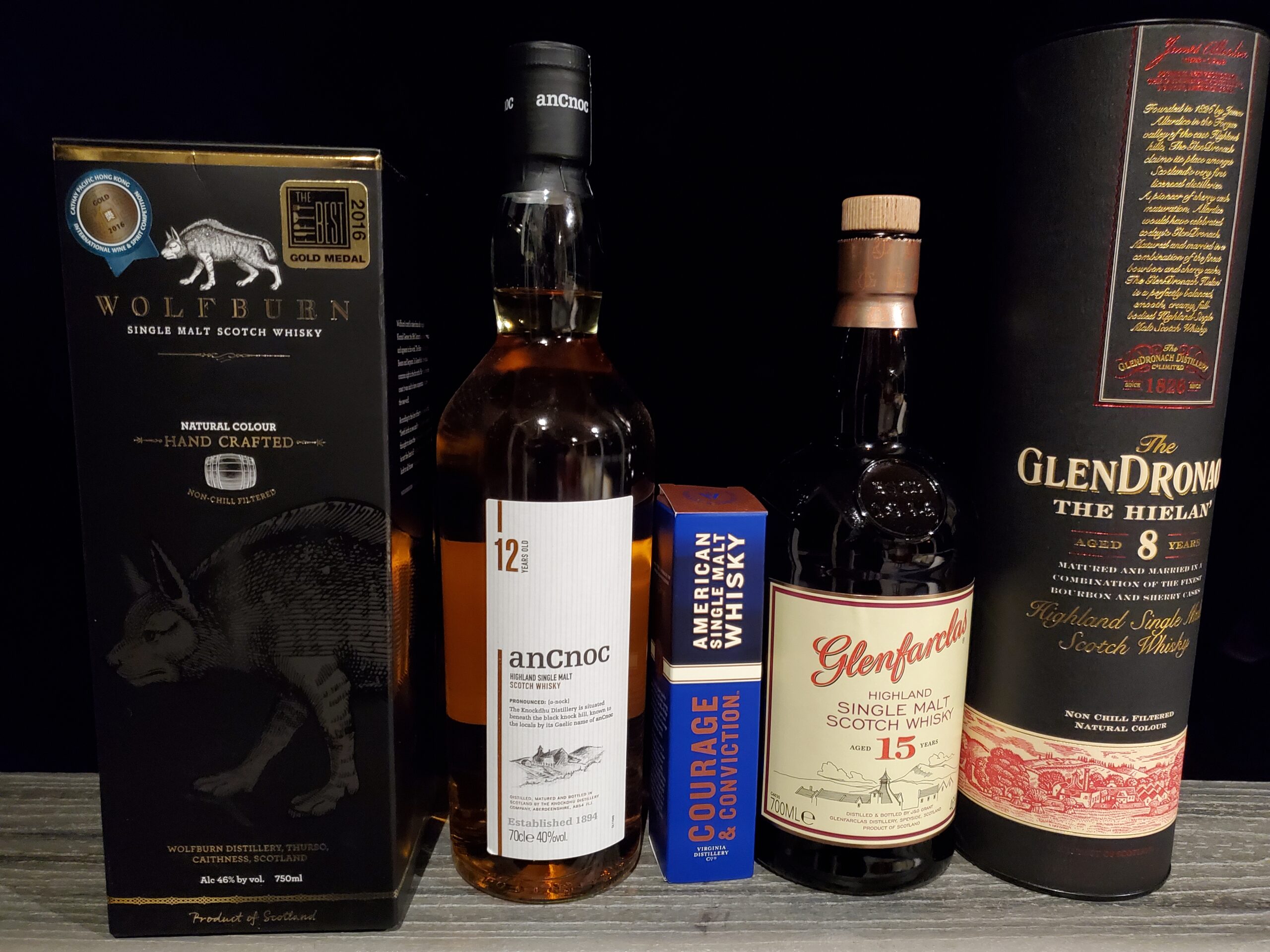
What happens when this American malt is inserted into a Scotch lineup? Will it be recognizably different, or will it hold its own? Let’s find out.
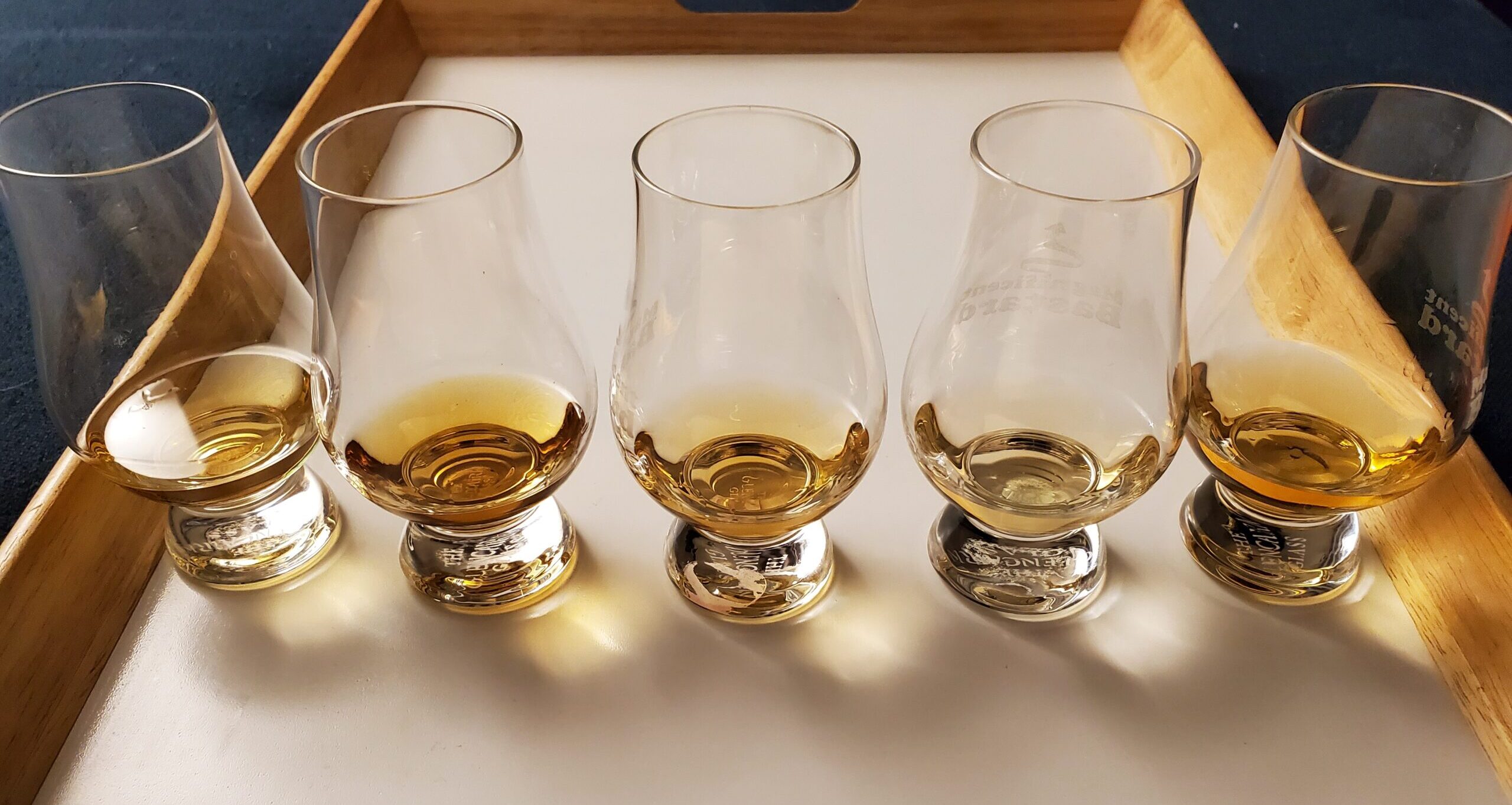
Whisky A
Nose: Fresh and sweet with pear, cut flowers, rosewater, sidewalk chalk, and petrichor. Pleasant, but unremarkable
Palate: The orchard fruit sweetness on the nose is instead candy sweetness in the mouth, and pleasantly chalky — reminiscent of edible candy necklace. A floral jasmine tea notes floats around the edges.
Finish: Short-medium; the jasmine tea comes forward and then relents to an oaky tannin.
Rating: 5.7/10. The nose was better than the initial and mid palate, which were better than the finish. This isn’t an un-enjoyable whiskey. Slightly above average, but forgettable. Not much evolution, and too much oak tannin. I’d enjoy a bottle, but wouldn’t rush to buy again.
Whisky B
Nose: Very, very similar to whiskey A’s combination of orchard fruit, floral notes, and chalky candied sweetness. Honeysuckle, Smarties, red apples stewed in brown sugar.
Palate: Again we’re hitting some of the same ranges as A. The candy sweetness is still there, but not cloying, joined by a chalky vanilla and a memory of potted flowers.
Finish: Medium length; Ginger heat emerges with a hint of dried fruit and oak.
Rating: 6.3/10. A and B are thematic cousins, but B is a bit brighter, deeper and more balanced. Slightly-more-above average. Another where I’d enjoy the bottle, but wouldn’t look to buy again.
Whisky C
Nose: More orchard fruit and candy sweetness, but this one is a little less floral. Toffee, vanilla, red apple, milk chocolate powdered drink mix.
Palate: Rich toffee, mixed dried fruits, bittersweet chocolate, and a cola rinse
Finish: Short-Medium length; The cola rinse turns to root beer, then a pinch of black pepper.
Rating: 6.7/10. Richer than A with a more interesting evolution. Tastier than B, if slightly less complex. It’s still pretty damn close to the first two, but I enjoyed this one most thus far. We’re approaching comfortably above-average. I’d definitely enjoy the bottle and consider a repeat purchase.
Whisky D
Nose: Red apple, cherry cola, candy necklace, dark fruit, with damp, old wood underneath.
Palate: Chocolate, charred fruit vanilla, baking spices: cinnamon, clove, maybe some anise
Finish: Long; Dark chocolate, char, and cinnamon. This one wants to hang out for a bit!
Rating: 7.1/10. I’m impressed. This dram built on the others, added some richness, dark tones, and a lovely char. A very good whisky that I’ll buy again in the future.
Whisky E
Nose: Caramel, dark dried fruit, damp earth and a hint of cut grass.
Palate: This is all caramel, vanilla, and dark fruit
Finish: Short; Dark fruit and black pepper.
Rating: 6.9/10. Straightforward and simple, but delicious. The black pepper on the finish created enough interest to elevate this one into second place on the night for me. I wouldn’t particularly enjoyed taking 45 minutes to geek out and analyze this whisky, but I’d sure as hell enjoy casually drinking it. Definitely above-average and will consider a repeat purchase.
Umm, so where’s the Virginia whisky? That was my first reaction to finishing the tasting. While there were notable differences among the whiskeys, none of the overall profiles really stood out as an outlier. Than in itself is impressive for the folks at Virginia Distillery Co., particularly given the age of Courage & Conviction. Now, onto the reveal, in ascending order of rating:
Whisky A (5.7)…..anCnoc 12. Well, that’s kind of a bummer. This was one that recently debuted in my world via a sample (Thanks, Fadi!), and I really enjoyed it then. Given the modest price point, it was under consideration to enter the regular purchase rotation. Now? Maybe not. Hopefully its poor performance was a neck pour issue.
Whisky B (6.3)…..Glenfarclas 15. NO! Say it ain’t so, old friend. This was the whisky that made me fall in love with Scotch. Have my tastes changed? Is this a subpar batch? Not an easy whisky to get (it is not sold in the US market), so we may have to go on a break.
Whisky C (6.7)…..Courage & Conviction. Impressive! Ignoring the numerical rating, this was a good Highland whisky. It beat expressions from distilleries that have been making whisky for over a century. Bravo.
Whisky E (6.9)…..Glendronach 8. That makes sense. Few bring out the dark fruit notes of a sherry cask like Glendronach, and this one had notable bourbon cask influence in the rich caramel and vanilla. For ~$35, that’s one heck of a purchase.
Whisky D (7.1)…..Wolfburn. What a pleasant surprise! This bottle was purchased on a whim to complete the tasting. IT was on sale and seemed interesting enough, and for $35! Talk about a value! The smoky char is what I think really set this one apart from the others. It goes to show the one real truth in whisky – smoke rules all!
Final Thoughts
This was fun. If you ever want to defy your expectations and really practice your process of analyzing a whisky, a blind tasting is the way to go.
Age, seemingly, increasingly is just a number in the world of whisky. The two oldest whiskeys I sampled were my two lowest rated. Give those lonely NAS bottles some love!
American malt is the next frontier for whisk(e)y lovers; I firmly believe that. American distilleries don’t just do bourbon and rye. There are world class single malts sitting on the shelves, waiting to be enjoyed. Consider reaching for a Virginia Distillery, a Balcones, or a Westland you’re ready to purchase the water of life.
